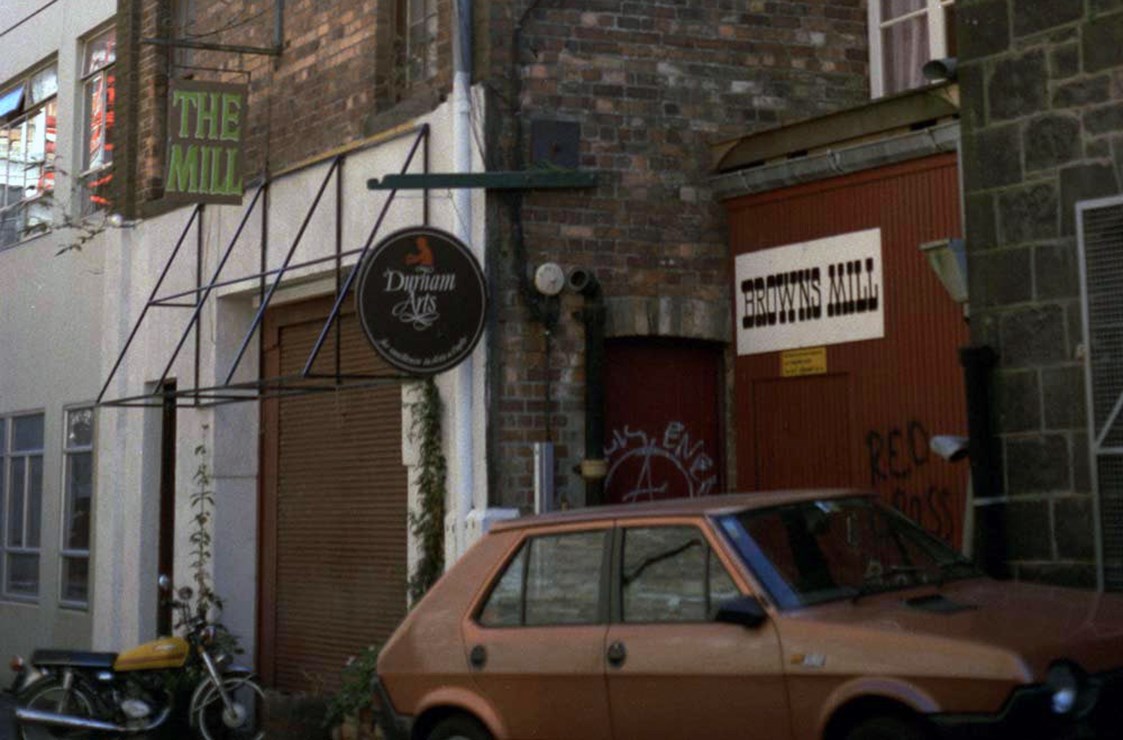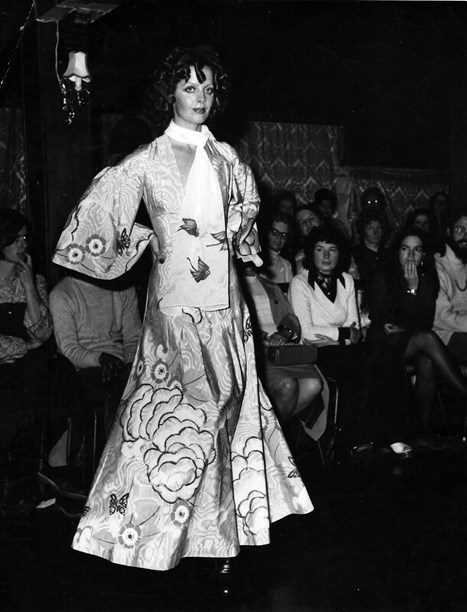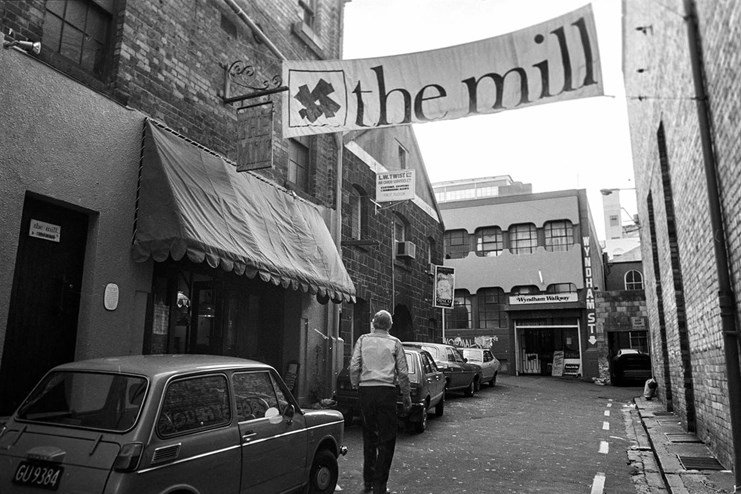Stories
Brown's Mill
1968-1980s

With a growing appreciation for hand craft in the 1970s and weekend trading severely restricted, many Aucklanders were drawn on a Saturday to the city’s burgeoning craft markets. The first, largest and with arguably the best quality craft was The Mill, commonly referred to as Brown’s Mill after the building's original function as Brown's flour mill.
The old stone building still had the original millstones, wooden floors, exposed ceiling beams and a kauri coal chute that had delivered the fuel for the steam driven mill.
Located in Durham Lane next to the Bluestone Room in the centre of Auckland city, The Mill was a collective set up in 1968 by a group of ten craftspeople who gambled on the hope that Aucklanders were interested in both craft and shopping at the weekends, both moderately unconventional ideas at the time. Their plans to open on Fridays and Saturdays were initially curtailed by court action from the Queen Street Business Association who opposed trading on Saturdays. They won that battle and became a role model for others like Cook Street Market before Saturday trading, which had been banned since 1945, was reintroduced in 1980.
Clearly the venture was successful; just two years later it was described by Ann Donnelly in Eve magazine (issue 51, 1970) as "the most exciting place in New Zealand" where locals and tourists could "roam the fabric bazaars of Auckland, where sophisticated craftsmen, wise in ancient skills, ply their wares". Soon the original 10 members had become 20, as other skilled craft practitioners joined the group.
Visitors at the Browns Mill Craft Market in Auckland, 1970. Photo by Ans Westra from Alexander Turnbull Library, Ref AW-0017. Image © Ans Westra.
While fashion was not the focus of the collective many of the craftspeople were making fashionable clothing. Much of what was produced and sold at the market was unique with a strong handcrafted element which sat on the fringe of the wider local fashion industry. For a number of these craftspeople it was a boom time in their careers.
Textile artist Zena Abbott was one of the founding members of The Mill, she wove textured rugs and garments from a range of materials. Fashion designer Bruce Papas commissioned her to create unique materials which he used for his garments bridging the gap between craft and high fashion. She also passed on her skills and inspired others through weaving demonstrations on open days, something which the other craftspeople at The Mill regularly did too.
Fabric artist Susan Holmes who was in later years well known for her work in the World of Wearable Arts, honed her craft at The Mill and literally sold thousands of one-off hand printed and dyed dresses, tops, skirts and coats. Alongside presenting her clothes at The Mill she was successful in the world of high fashion regularly showing and winning awards for her creations at the popular Benson & Hedges Fashion Design Awards.

Susan Holmes used stencils to print this evening dress and silk scarf, part of a fashion parade at Brown's Mill in 1972.
Other fabric dyers included Valerie Hunton who mainly worked 'sculpting' garments in soft wool and felt, Barbara Allpress a fabric dyer and maker of 'off-beat' clothes and June Vivian who created garments in subtlety shaded silks.
Fashion designer Gabrielle Sinton who had started up Bizarre boutique with Nicky Boyes in 1966 and designed clothing for the popular 1960s music show C'mon also sold at The Mill.
Other clothing makers were Ian Spalding who made handspun garments and Dianne Copp, a Yugoslav-born leather and suede worker who made beautifully coloured coats, skirts and fleecy faced jerkins.
Another luminary was French-Canadian-born knitwear designer Pierrette Viscoe who was the mastermind of the Tigermoth Boutique co-operative which started up two years after The Mill began. Pierrette crafted her clothing on a knitting machine and was well known for her stripy dresses, trouser and cat suits.
The Mill was home to a number of jewellers. Pierrette's husband Warren was a sculptor who also made translucent, pop perspex rings. He was likewise involved in Tigermoth, notably crafting the original perspex store sign. Kevin Rawlinson, was a maker of copper and silver-plated jewellery.
One of the most notable of the jewellers to come out of The Mill was José Bribiesca whose signature was square rings stacked with angular architectural constructions. With their bright chrome finish and inlaid with Perspex, the originals have become collectors items. Today they continue to be made and are sold through the Fingers jewellery co-operative.

Brown's Mill, circa 1979. All Rights Reserved, Image © Chris Traill.
As well as days when various practitioners would show off the workings of their craft, the Mill also promoted the available wares through fashion shows which showcased not only fashion but the other crafts being produced. Students from the Van Zon School of Creative Dance were models for some of these parades and they were encouraged to interpret the clothing through dance. These unique shows were performed at the Mill amongst the craft stalls.
The Mill provided the model for many other markets and craft businesses that followed such as the Cook Street Markets, which opened in 1970. There was also Durham Arts just around the corner from The Mill and the Country Road store which sold hand-crafted wares in Avondale. These venues were often the starting points for young designers testing the appetite for their work. In the early 1980s, markets became more commercial and were often pitched to a broader demographic including tourists. Victoria Park Market and the Albert Street Market are examples from this time.
Craft moved from the streets, stalls and community into commercial enterprises with many of the artists working on commissions that adorned corporate buildings. The Mill itself, like many other architectural icons in Auckland city in the 1980s, fell victim to ruthless property developers. It was demolished in pre-dawn secrecy despite a full heritage listing.
Text by Cerys Dallaway Davidson. Banner image from Sir George Grey Special Collections, Auckland Libraries, 1052-B9-31A. No known copyright restrictions.
Last published July 2017.